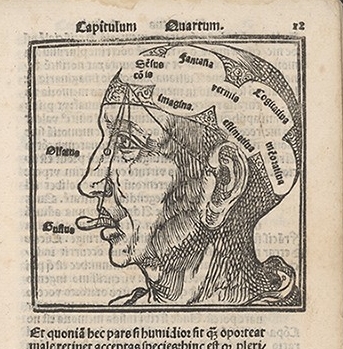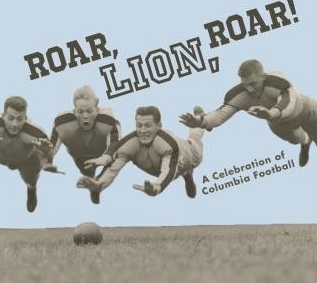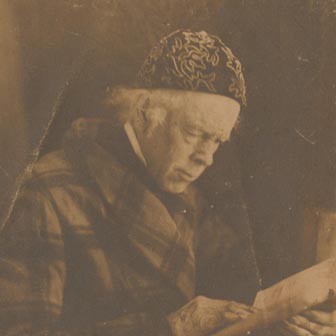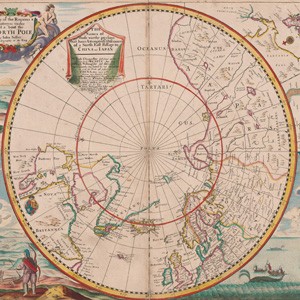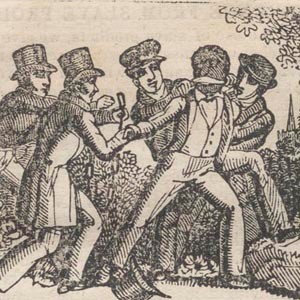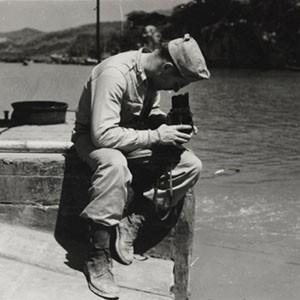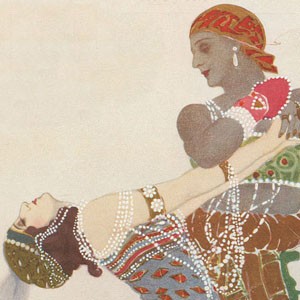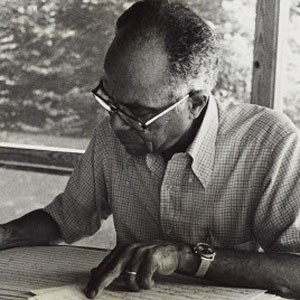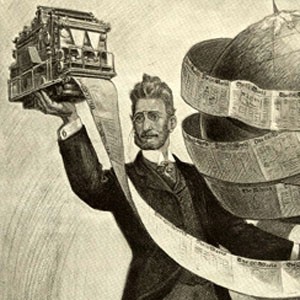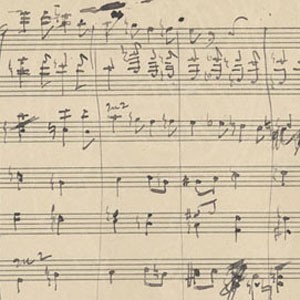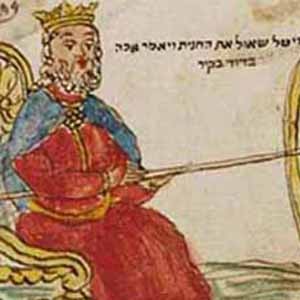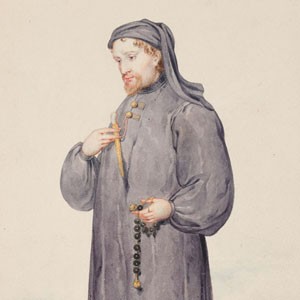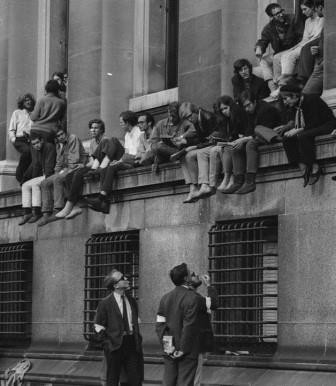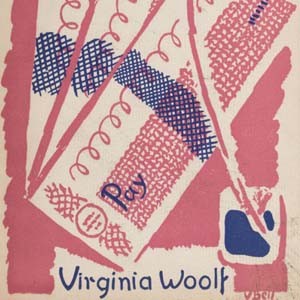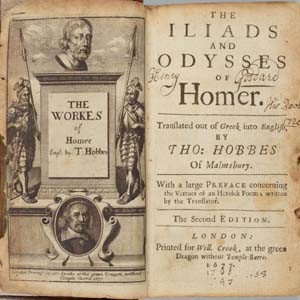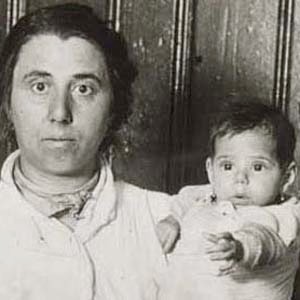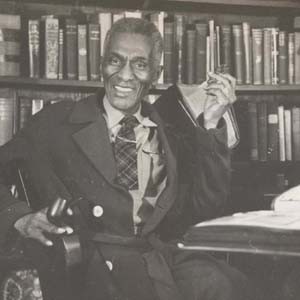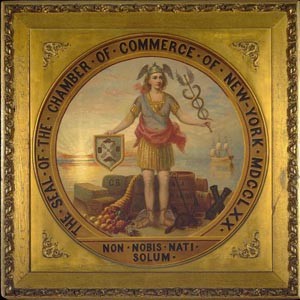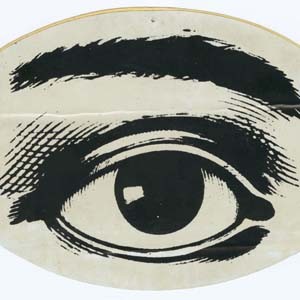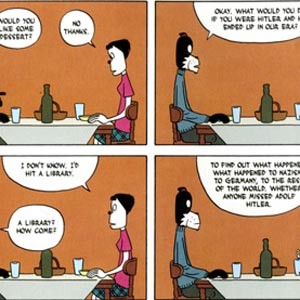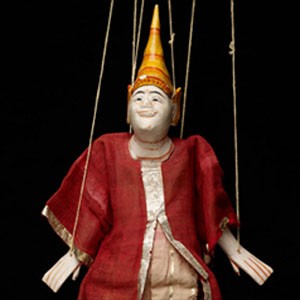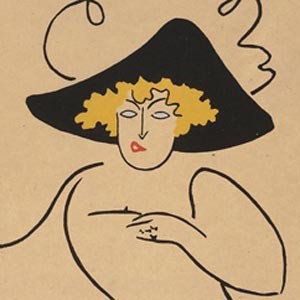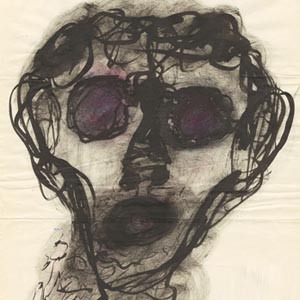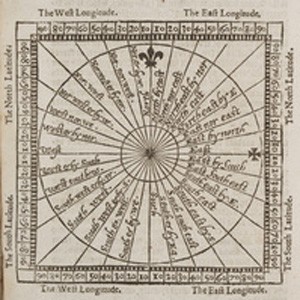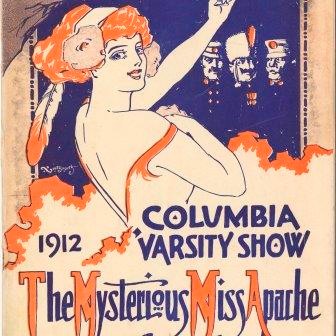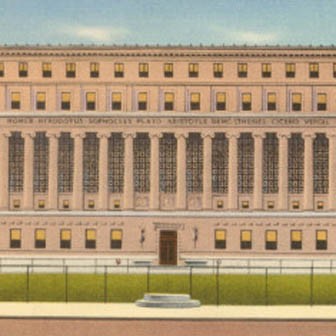RBML's Online Exhibitions
The following online exhibitions were created using materials from the Rare Book and Manuscript Library. Exhibitions are listed in the order of the original launch date. In addition to these resources, the Digital Library Collections (DLC) website is a gateway to digital reproductions and descriptions of photographs, posters, drawings, objects, ephemera, and manuscripts as well as other archival material from Columbia's rare and special collections.
2022

Between the Adriatic and the Ionian: The Jews of Corfu
The exhibit features prayer books, communal and legislative documents, and ketubbot. Among the stories featured include an international dispute regarding the acceptability of the Romaniote Jews’ musical rendition of the Shema prayer; varied legislation about the Corfu Jews’ requirement to wear the yellow badge (as had been mandated in Venice); prayers for varied holidays, penance, a property dispute, a synagogue theft; and documents relating Jewish doctors and education in Corfu. The exhibition, featuring materials from Columbia University Libraries at both Columbia (noted with "CUL") and the Jewish Theological Seminary (noted with "JTS"), will bring more attention to this unique and understudied community.
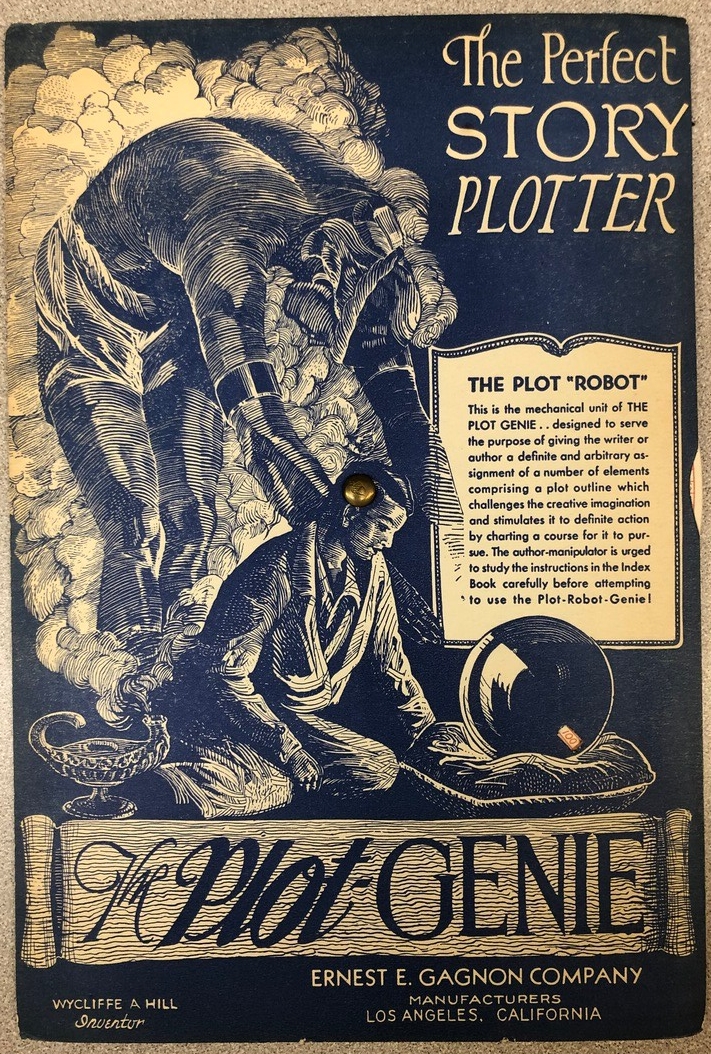
The Literary History of Artificial Intelligence
This exhibition explores the long, shared history of literature and computation through the Columbia Library’s holdings. We present texts that participate in early debates about whether writing was a skill to be honed or a gift to be appreciated and whether the skills of writing could be learned and even made into repeatable algorithms. Is writing like any other craft that can be learned and taught? Following a timeline from circa 1890–1970, this exhibition explores professional manuals, devices, and techniques that promised to make writing easier—and even to automate it. The Literary History of AI showcases examples of algorithmic composition, such as prose and poetry written by machines, alongside literature written with the aid of algorithmic and combinatorial devices. This exhibition broadly tracks two broad stories related to the literary history of AI: production and analysis.
2021
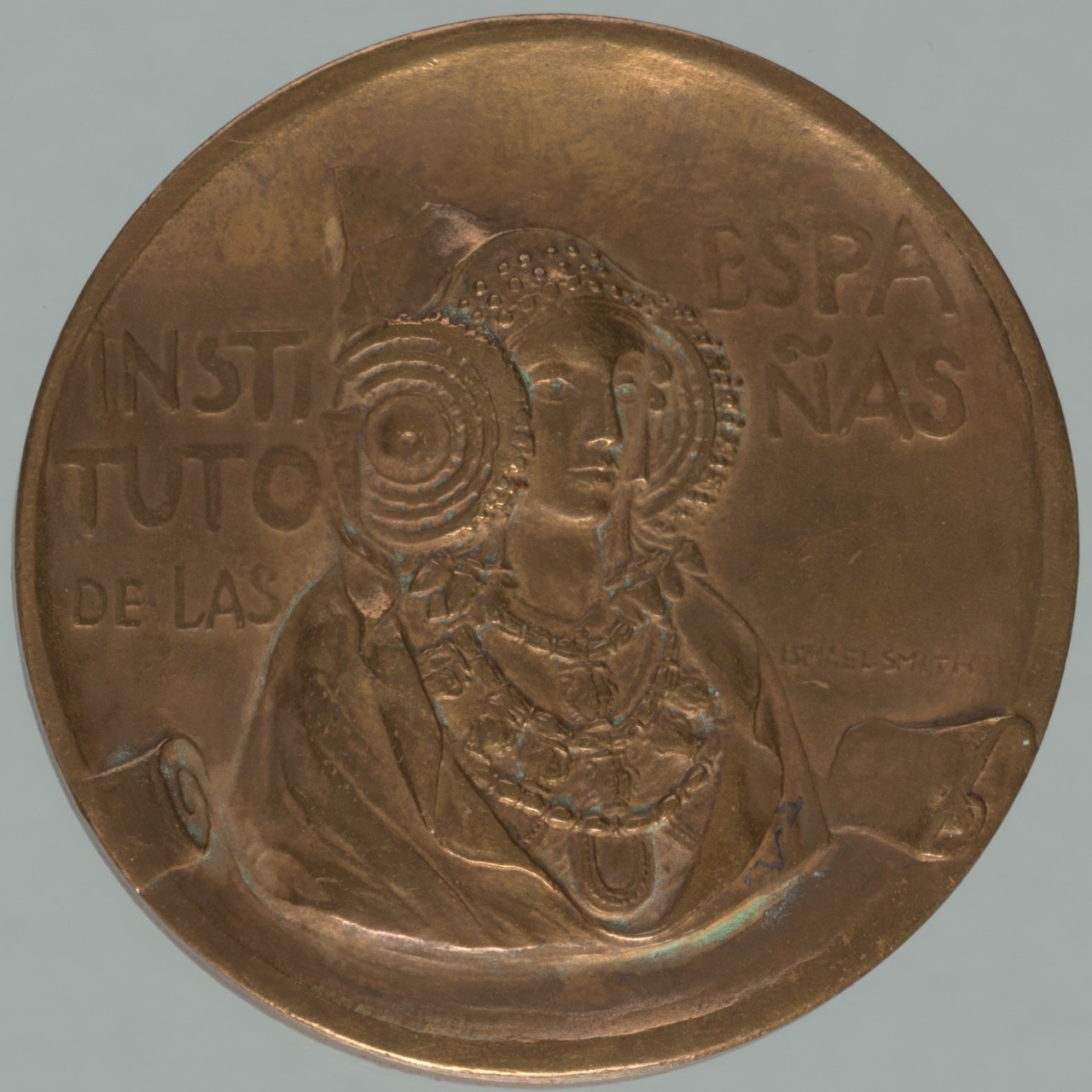
The Hispanic Institute Between the Wars: The Making of Cultural Networks
Since its foundation in 1920, the Hispanic Institute for Latin American & Iberian Cultures at Columbia University (initially established as the Instituto de las Españas), has aimed to disseminate research on Iberian and Latin American cultures in all their manifestations and to promote academic and social events that showcase new contributions to Latin American and Iberian cultural production in Europe, Latin America, and the United States.
Focusing on its early decades, this centennial exhibition looks back at the Institute’s contributions within Columbia, the broader seminal influence it has had in the founding of Hispanism and Lusophone studies in the American academy, and the pivotal role it has played in fostering cultural exchange and mediating engagement with academics, writers, and artists abroad and at home. The exhibition also highlights the geopolitical dimension of the Institute and its strategic positioning between the economic expansionism of the United States in Latin America and the project of cultural revitalization of Spain after the loss of its colonies.This exhibition was curated by Felipe Becerra, PhD candidate in Latin American and Iberian Cultures and Sócrates Silva, Latin American & Iberian Studies Librarian.
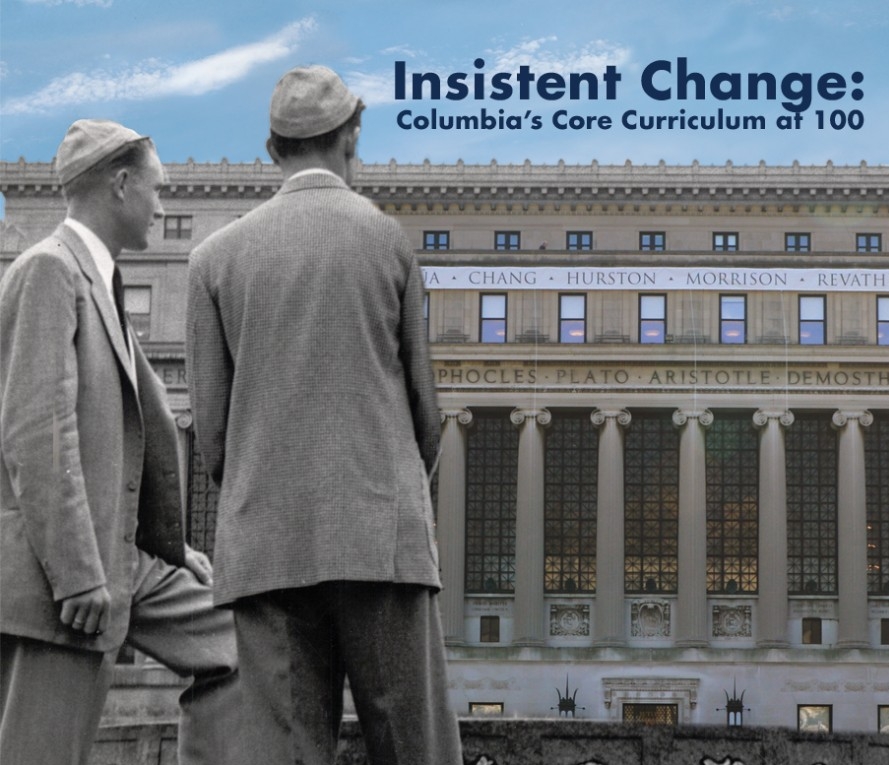
Insistent Change: Columbia's Core Curriculum at 100
In 1919 Columbia instituted a course of study known as Contemporary Civilization. It grew out of a War Issues course offered during World War I and was required of every student in order to provide all with a forum to analyze and discuss primary texts relevant to contemporary problems. Proceeding roughly by decade, this exhibition shows how the course transformed and developed over the years. By also focusing on the development of the Core Curriculum as a whole, the exhibition explains how CC's faculty, administrators and students have worked together to keep the course relevant through a succession of crises and changes in the broader political, economic and social realms in the country and the world.
This online exhibition is based on a physical exhibition of the same name which was on display in the Rare Book and Manuscript Library in February and March 2020.
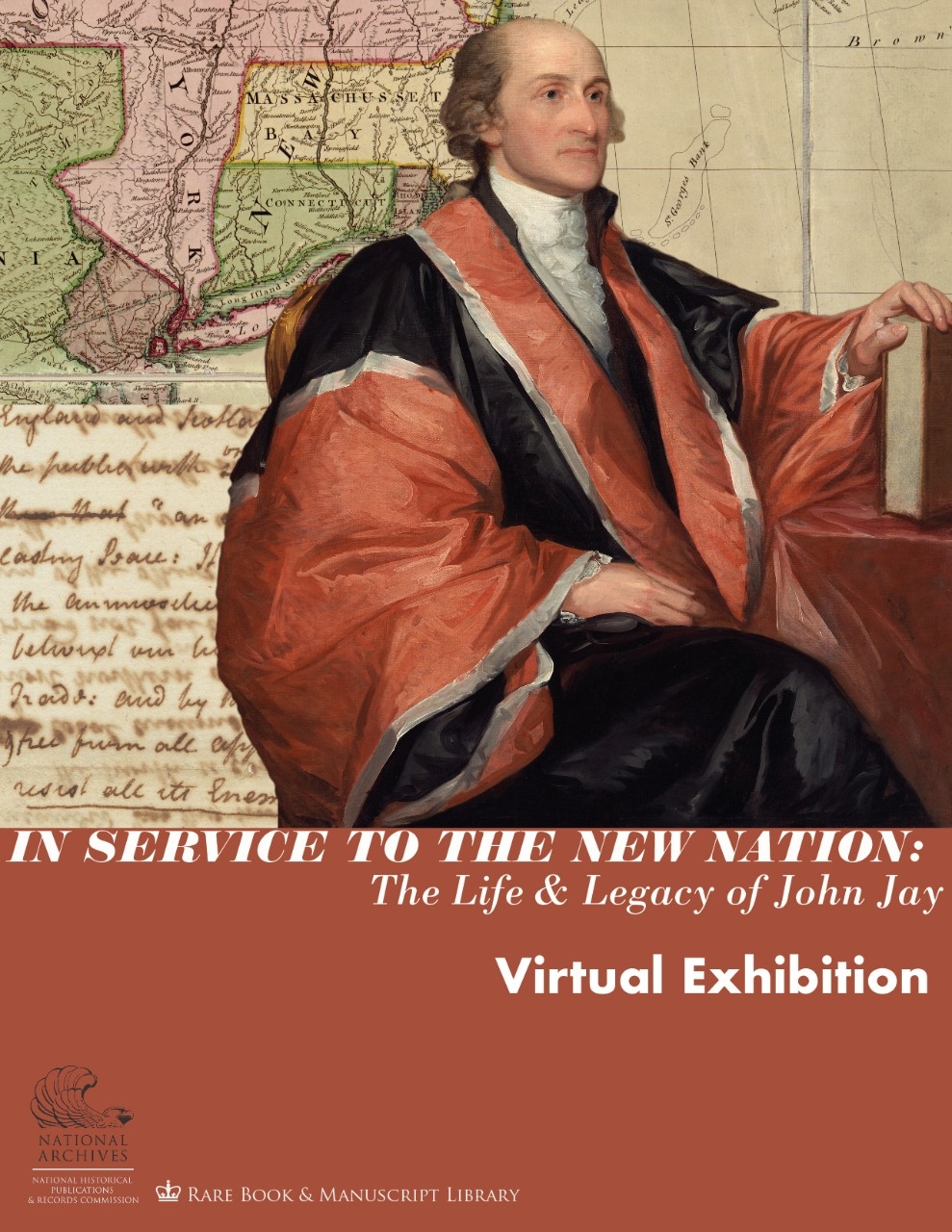
In Service to the New Nation: The Life & Legacy of John Jay
As part of the broader events celebrating the near completion of the seven volumes of The Selected Papers of John Jay publication project based at Columbia University, this exhibit aims to shed light on the different aspects of Jay's personal, familial, and public life and discuss his many civic accomplishments in shaping America's governance, diplomacy, and judiciary. In Service to the New Nation: The Life & Legacy of John Jay draws on the correspondence, public papers, printed items, portraits, and drawings located in the various collections and libraries at Columbia University. The items presented include such varied materials as the transcribed Laws of King’s College, Jay's draft of The Federalist 5, period sheet music of Governor Jay's March, and a chart of New York City's harbor defences. Unless otherwise noted, the materials presented herein are taken from the John Jay Papers, 1668-1862 Collection and Columbia's Rare Book & Manuscript Library.
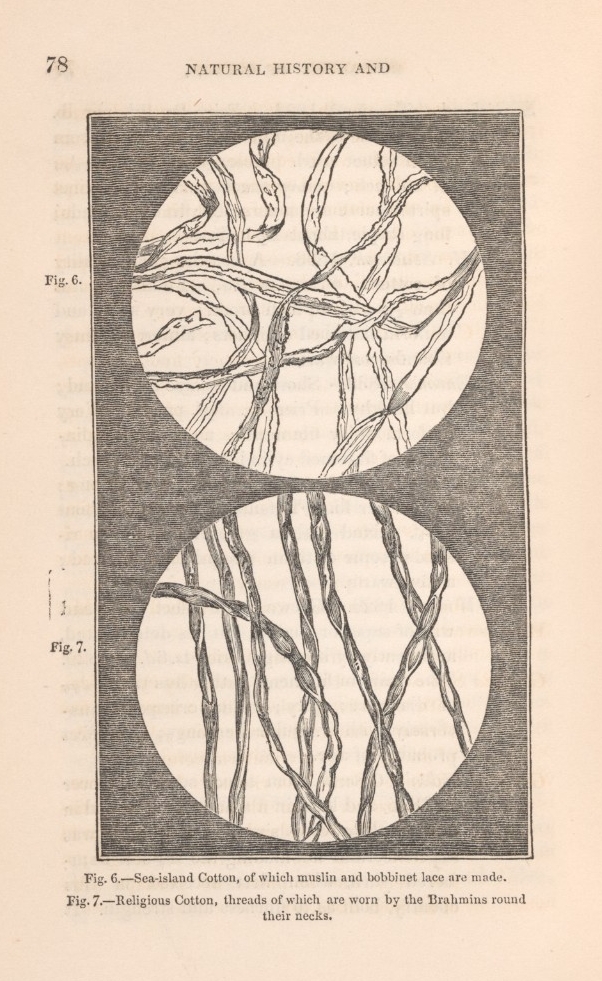
Greening the Archive with the Samuel Oldknow Papers, 1782-1924
This exhibition unpacks the Samuel Oldknow Papers, a RBML archive unassumingly described as “the papers of a watermill,” that in fact showcases the growing importance of cotton manufacturing to Britain’s domestic industry both as a hub for growing international trade and a source of employment that shaped many working people’s lives. The Oldknow-Arkwright archive combines the papers of Samuel Oldknow, an English industrialist who was the first large-scale domestic manufacturer of lightweight cotton cloth, and Richard Arkwright, inventor of the spinning frame. The papers—letters, account books, invoices, and payrolls documenting the rise and fall of a cotton empire—provide valuable insight into many facets of the new factory system, including the extension of global trade networks dependent on slave labor and imported cotton and the transformation of local British environments, from waterways, ports and canals to sleepy agricultural towns. While Oldknow has typically been a subject for economic historians, who tend to focus on this industrialist’s (ultimately unsuccessful) effort to build a modern factory, in fact these papers also capture England in the throes of enormous social and ecological changes.
2020
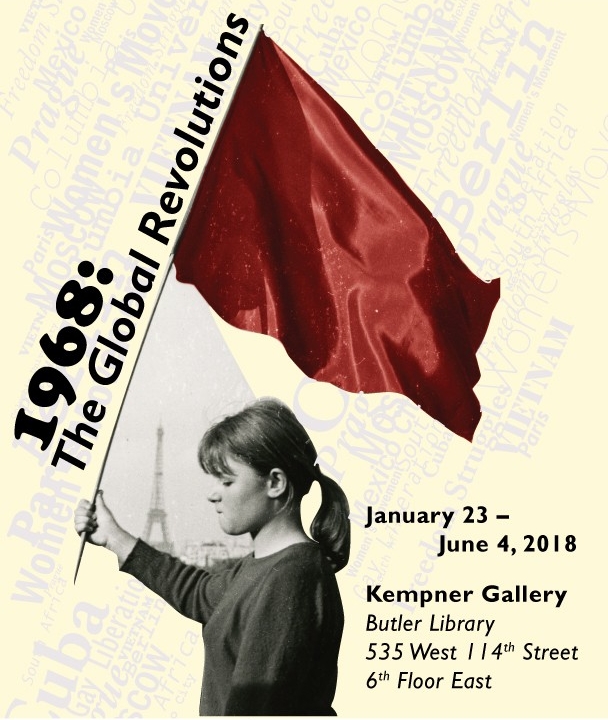
1968: The Global Revolutions
From Hanoi to Harlem, Czechoslovakia to China, Memphis to Paris, the yearlong crises of 1968 rocked world communities with an epoch-making series of political explosions. In late April 1968, “The Revolution” came to campus at Columbia University. “1968: The Global Revolutions” traces the connections between those worldwide upheavals, linking them together to demonstrate how many local and national movements looked to peers and comrades in other countries, campuses, and communities. The exhibition was timed to coincide with the fiftieth anniversary of those events. It appeared in the spring of 2018 in the Kempner Gallery of the Rare Book & Manuscript Library at Columbia University.
Memory and Material in Early Modern England
Memory and Material in Early Modern England seeks to continue a conversation, building on recent work in early modern studies, about the many ways in which early modern literature and culture imagine and articulate the relationship between memory and materiality. This accompanying exhibit surveys several ways in which early modern texts and materiality intersected, from mnemonic texts that took advantage of developing print technologies to spread the techniques of the "Art of Memory," to writing tables that enabled early modern thinkers to record and erase thoughts, functioning as a material memory aid. Drawing on the RBML's broad early modern collections, it provides a glimpse into the rich material world of memory in the sixteenth and seventeenth centuries.
Roar, Lion, Roar: A Celebration of Columbia Football
Focusing on players, coaches, playing fields, and the games won and lost, this exhibition traces the arc of Columbia’s football program from its inception in 1870 to the present day. As one of the oldest college programs in the country, Columbia Football has a rich and fascinating history which the University Archives is delighted to share and celebrate through this display of historical materials from our collection. This online exhibition is based on a physical exhibition of the same name which was on display in the Rare Book and Manuscript Library from August 26 to December 20, 2019.
2018

In the School of Wisdom: Persian Bookbinding, ca. 1575-1890
Following the introduction of lacquer-painting in the 15th century, bookbindings became a rejuvenated site for creative expression in Iran. ‘In the School of Wisdom’ presents over thirty examples, representing the diversity of the art as it developed from the late Safavid to Qajar eras and contextualizing it within a changing landscape of libraries and book culture.
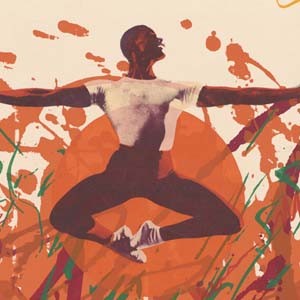
Arthur Mitchell: Harlem’s Ballet Trailblazer
This exhibition celebrates the extraordinary career and legacy of the New York City Ballet’s first African-American star and the founder and longtime director of the Dance Theatre of Harlem. This website, created in tandem with the exhibition Arthur Mitchell: Harlem’s Ballet Trailblazer, on display at the Wallach Art Gallery from January 12 to March 11, 2018, highlights material from the Arthur Mitchell Collection, Rare Book & Manuscript Library, Columbia University. It also includes commissioned essays, timelines, links to publicly available sources, and other resources in addition to material from the physical exhibition. Please share this website with friends, students, and colleagues, using it to explore the rich histories behind Arthur Mitchell’s career and the Dance Theatre of Harlem, which celebrates its fiftieth anniversary in 2019, and encourage new scholarship about African Americans and ballet.
2017
Nathaniel Fish Moore Photographs
Nathaniel Fish Moore was a student at Columbia (AB 1802, MA 1805), a professor of Greek and Latin (1817-1835), an honorary degree recipient (LLD 1825), the first College Librarian (1837-1839) and the eighth Columbia President (1842-1849). This exhibition focuses on his life outside of Columbia as he devoted his time to the nascent art of photography, in particular the salt print paper-based photographic process. As an early amateur photographer, Moore prepared his own chemicals and papers. He captured views of New York City and the Highlands of the Hudson area, his family and even a few self-portraits. Because salt prints are fragile and unstable, they have been digitized for long-term preservation.
2015
Early Modern Futures
This exhibition accompanies the Early Modern Futures conference held on April 24, 2015 as well as a physical exhibition in the Rare Book & Manuscript Library. Early Modern Futures seeks to spark a conversation about the many ways in which early modern literature practices prospective historical thinking. It asks how beliefs about future events (from the eschatological to the economic to the genealogical) shaped peoples actions in the present; how early modernity analogized historical and prospective thinking; and how various textual and literary forms--whether records, scripts, manuals, genres, or editions--sought to represent the future and even anticipate their own reception.
Sydney Howard Gay's "Record of Fugitives"
In 1855 and 1856, Sydney Howard Gay, a key operative in the underground railroad in New York City, decided for unknown reasons to meticulously record the arrival of fugitive slaves at his office. The resulting two volumes are a treasure trove of information about how and why slaves escaped, who assisted them, and where they were sent from New York. This website explores this important artifact in detail, displaying the journals in their entirety, and offering additional annotations and analytical commentary by Eric Foner, DeWitt Clinton Professor of History at Columbia University.
2014
Barney Rosset and China
The photographs in this exhibit were taken during 1944 and 1945 by Grove Press founder, Barney Rosset, and other colleagues, when he was a photographer in the US Army Signal Corps stationed in China. The photos document U.S. cooperation with Chinese soldiers, the surrender, and Japanese retreat, as well as devastation caused by the fighting. The exhibition also demonstrates Rosset's interest in China preceding this post and afterward in his career as a publisher. The materials come from the Barney Rosset Papers held by the Rare Book and Manuscript Library.
2013
Ernst Reichl: Wide Awake Typographer
This website by the curator of the 2013 RBML exhibition of the same name, documents the career of Ernst Reichl (1900-1980), a German-American book designer who was active and prominent in New York/American publishing from the 1930s into the 1970s.
Sergei Diaghilev and Beyond: Les Ballets Russes
The diversity and splendor of Sergei Diaghilev's world of Russian ballet and opera seasons in Paris was on display at the Chang Octagon Exhibition Room, Rare Book & Manuscript Library, March 16 through June 26, 2009. The exhibition features selections from the Bakhmeteff Archive and Rare Book and Manuscript Library collections.
Ulysses Kay: Twentieth Century Composer
Ulysses Kay (1917-1995) wrote more than one hundred forty compositions in a wide range of forms – five operas, over two dozen large orchestral works, more than fifty voice or choral compositions, over twenty chamber works, a ballet, and numerous other compositions for voice, solo instruments or dancer, film, and television.
2012
Joseph Pulitzer and The World
An exhibition of the papers of Joseph Pulitzer and of his newspaper, The World, held by the Rare Book & Manuscript Library. The exhibition contains a variety of materials that show the working life of this truly remarkable individual. Included are letters, documents, ledgers, newspapers, photographs, and realia concerning his life, as well as material documenting Pulitzer’s role in the founding of Columbia’s School of Journalism and the creation of the Pulitzer Prizes.
Music at Columbia: the First 100 Years
The online version of the 1996 Centennial Exhibition of Columbia’s Department of Music, mounted in Low Library as part of the Department’s celebrations, with material drawn from the University Archives, Rare Book and Manuscript Library, Music Library, and Office of Art Properties.
The People in the Books: Stories from Columbia's Hebraica and Judaica Manuscripts
Columbia University's collection of Judaica and Hebraica is the third largest in the country, and the largest of any non-religious institution. This is an online version of an exhibition held at the RBML from September 12, 2012 through January 25, 2013. The exhibit features highlights from the collection, spanning the 10th to the 20th centuries, and crossing the globe from India to the Carribean. The exhibit focuses on the many stories inherent in each of the manuscripts.
Reading of Books and the Reading of Literature
This online exhibition is meant to accompany a day-long symposium at Columbia University on April 27, 2012. The exhibition, along with the conference, focuses on the relation between literature and the media in which it is conveyed.
2011
1968: Columbia in Crisis
The occupation of five buildings in April 1968 marked a sea change in the relationships among Columbia University administration, its faculty, its student body, and its neighbors. Featuring original documents, photographs, and audio from the University Archives, this online exhibition examines the causes, actions, and aftermath of a protest that captivated the campus, the nation, and the world.
Core Curriculum: Contemporary Civilization
This online exhibition and its companion, “Literature Humanities,” celebrate the Core as the cornerstone of a Columbia education. Highlights include Galileo’s Starry Messenger (1610); John Jay’s manuscript of Number 5 of The Federalist Papers (1788); and Mary Wollstonecraft’s A Vindication of the Rights of Woman (1792).
Core Curriculum: Literature Humanities
A companion to “Core Curriculum: Contemporary Civilization,” highlights of this exhibition include a papyrus fragment of Homer’s Iliad dating from the 1st century BCE; a copy of Homer’s Works (1517) owned by Martin Luther; Shakespeare’s first folio Works (1623); and Virginia Woolf’s To the Lighthouse (1926).
Photographs from the Community Service Society Records, 1900-1920
An exhibit of photographs (by Jessie Tarbox Beals, Lewis Hine, and others) and publications used in the “scientific charity” movement by the Association for Improving the Condition of the Poor, founded in 1843, and the New York Charity Organization Society, founded in 1882, which are today merged and known as the Community Service Society (CSS). Their innovative methods were later incorporated into the practices of social work, government welfare programs, and philanthropic organizations.
"The Unwritten History": Alexander Gumby's African America
This exhibit explores the efforts of Alexander Gumby to create a documentary history of African-American achievement in the nineteenth and early-twentieth centuries. An influential figure during the Harlem Renaissance, Gumby compiled a scrapbook collection of approximately 300 volumes in support of his project, filled with news clippings, photographs, pamphlets, handbills, original artwork, manuscripts, and ephemera, pages from which are on display here.
2010
The Chamber of Commerce of New York
This exhibit provides a rich visual guide to the New York Chamber of Commerce and Industry Records collection in the Rare Book & Manuscript Library. Organized thematically, it showcases the varied business that occupied the New York Chamber of Commerce over its more than two hundred years of operation.
Choosing Sides: Right-Wing Icons in the Group Research Records
Group Research was an independent organization that documented and publicized the activities of "extremist" political groups in the United States from the early 1960s to the mid-1990s. This exhibit draws from Group Research's archive to showcase the role that visual media played in creating the modern American conservative movement during those years. Included are more than fifty images from items like newsletters, posters, record covers, and bumper stickers that represented such notable right-wing groups as the John Birch Society, the Christian Crusade, and the Citizens' Councils of America.
Comics in the Curriculum
This exhibition highlights Butler Library's growing collection of comics and graphic novels. The medium of comics encompasses every genre and offers a wide variety of artistic and literary styles. Through seven different themes, the exhibition contrasts traditional art with comic art, and suggests possibilities for use in research and teaching.
Dramatic Museum Realia
A website with images and descriptions of over 500 puppets, masks, historical theater models and stage designs. Gathered for documentary and pedagogical purposes, the objects range in date from the 18th well into the 20th centuries, and are from countries all around the globe.
Frances Perkins: The Woman Behind the New Deal
Frances Perkins (1880-1965) is no longer a household name, yet she was one of the most influential women of the twentieth century. Government official for New York State and the federal government, including Industrial Commissioner of the State of New York from 1929-1932, Perkins was named Secretary of Labor by Franklin Delano Roosevelt in 1933. As FDR’s friend and ally, Perkins would help the president fight the economic ravages caused by the Great Depression and make great strides toward improving workplace conditions.
The Melting Pot: Russian Jewish New York
An online exhibition of materials from the Bakhmeteff Archive of Russian and East European History and Culture exhibition held at the Rare Book and Manuscript Library from April 4, 2006 to July 30, 2006. It features photographs, personal documents, posters, original artworks, and books on the New York Russian Jewish immigrant community.
Naked Lunch: The First Fifty Years
The exhibition celebrates the 50th anniversary of William S. Burroughs's novel Naked Lunch and provides an overview of Columbia University's extensive holdings of rare books and original manuscripts related to the novel's creation, composition, and editing, as well as other unique Burroughs material. The exhibition includes the original manuscripts of Burroughs's first two novels, Junkie (1953) and Naked Lunch (1959), and correspondence to and from Burroughs, and his close friends and collaborators Lucien Carr, Allen Ginsberg, and Jack Kerouac, as well as photographs, and Burroughs's own Dream Machine.
Political Ecologies in the Renaissance
This exhibition brings together eleven scientific texts from Columbia’s Rare Book and Manuscript Library. It features canonical and non-canonical science books and covers seven topics: mining, magnetism, navigation, astronomy, the art of war, hydraulics and hydrostatics, and astrology.
Varsity Show: A Columbia Tradition
Initially conceived as a fundraiser for the University's athletics teams, The Varsity Show has grown into Columbia University's oldest performing arts tradition. This online exhibition, highlighting the history and some of the more notable elements of this tradition, is an expansion of a physical exhibit created by the University Archives in 2004 to mark the 110th anniversary of The Varsity Show.
2009
Butler 75: Butler Library's 75th Anniversary, 1934-2009
In celebration of Butler Library's 75th anniversary, we are pleased to present Butler 75, an online exhibition of Butler Library, 1934 – 2009. The exhibition features images from the University Archives highlighting the construction, art and architecture of Butler Library, and the people who've used and enjoyed the library over the years. Special features include a timeline of events and a "Tell Us Your Story" area of alumni memories.
"Our Tools of Learning:" George Arthur Plimpton's Gifts to Columbia University
Drawn exclusively from the Plimpton Collection, this exhibition includes manuscripts and books from medieval times through the early 20th century, including many of the manuscripts and books that were used to illustrate George Arthur Plimpton's The Education of Shakespeare and The Education of Chaucer, and David Eugene Smith's Rara Arithmetica. Additional sections of the exhibition deal with handwriting and education for women, two of Plimpton's particular interests.
2005
John Jay and the Constitution
This website, prepared for U.S. Constitution Day 2005 (September 17) in conjunction with a public exhibition on the same theme, provides an in-depth look at the influence U.S. statesman John Jay had on the model of government that was ultimately embodied in the Constitution. It includes analysis and commentary by historian and Jay scholar Richard B. Morris (190489), reproductions of Federalist papers and other texts authored by Jay, links to reproductions of relevant Jay correspondence in Columbia's John Jay papers website, and other background material.
2004
Jewels in Her Crown: Treasures from the Special Collections of Columbia’s Libraries
This exhibit brings together for the first time selected objects from the eleven Special Collections that exist within the Columbia University Libraries and their affiliates. Organized in honor of Columbia's 250th anniversary, the exhibition celebrates both the rich collection of books, drawings, manuscripts and other research materials that have been gathered since King's College had its start near Trinity Church in lower Manhattan in 1754, and the generosity of the donors whose gifts have made possible the work of students and scholars for many generations.
2003
The Russian Imperial Corps of Pages Online Exhibition Catalog
An online exhibition containing over one hundred images and texts from the Imperial Corps of Pages presentation, which was on display from December 2002 until February 2003 in the Kempner Gallery. It is a joint project of the Libraries' Bakhmeteff Archive of Russian and East European History and Culture and the Libraries Digital Program Division.
2002
Celebrating the Liturgy's Books
This collaborative website, featuring digital images and related music clips, is based on the 2002 exhibit, "Celebrating the Liturgy's Books: Medieval and Renaissance Manuscripts in New York City," a city-wide venture on the occasion of the meeting of the Medieval Academy of America.
Shakespeare and the Book
This exhibition was inspired by the publication of David Scott Kastan's Shakespeare & The Book (Cambridge University Press, September, 2001 The exhibit draws heavily on the spectacular collection of English and American literature formed by Jack Harris Samuels, and bequeathed to the library by the collector's mother, Mollie Harris Samuels, in 1970.
Joseph Urban Stage Design Models & Documents
The digitization of Urban’s work was part of a larger project funded by a grant from the National Endowment for the Humanities (NEH) to preserve, photograph, stabilize, and improve access to approximately 340 three-dimensional stage models created by Urban for New York theaters.
